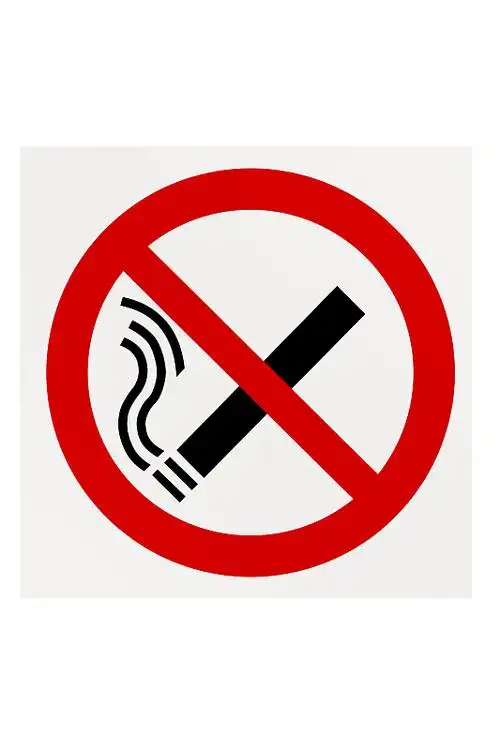Unveiling the Hidden Danger: How Smoking Worsens Outcomes in Arrhythmogenic Cardiomyopathy
Arrhythmogenic Cardiomyopathy, or ACM, is a complex and often misunderstood heart condition. For those living with it, or for loved ones supporting them, the journey involves navigating a landscape of medical appointments, lifestyle adjustments, and constant vigilance. The primary concern in ACM is the heart's muscle tissue, which gradually gets replaced by fatty and fibrous scar tissue. This process disrupts the heart's normal electrical signaling, creating a fertile ground for dangerous irregular heartbeats, known as arrhythmias. While genetic factors lay the groundwork for this condition, emerging research points to powerful external triggers that can dramatically accelerate its progression. Among these, smoking stands out as a critically modifiable yet severely underappreciated risk factor. The connection between smoking and poor prognosis in arrhythmogenic cardiomyopathy is not just a casual association; it is a direct, biological pathway that can significantly alter the course of the disease.
To truly grasp why smoking is so detrimental, we must first understand the dual assault ACM wages on the heart. It’s a problem of both structure and electricity. Structurally, the heart's muscular walls, particularly the right ventricle, become thin, weak, and scarred. Electrically, this scar tissue acts like roadblocks on a highway, causing the heart's electrical impulses to short-circuit. This can lead to palpitations, dizziness, fainting, and in the most severe cases, sudden cardiac arrest. The goal of managing ACM is to slow this structural deterioration and control the arrhythmias. This is precisely where the habit of smoking launches its multi-pronged attack, undermining every aspect of effective disease management.
The Chemical Onslaught: How Cigarette Smoke Directly Damages Heart Tissue
Cigarette smoke is a toxic cocktail of over 7,000 chemicals, many of which are poisonous and at least 70 known to cause cancer. When we talk about smoking as a risk factor for arrhythmogenic cardiomyopathy progression, we are referring to the direct damage these chemicals inflict on an already vulnerable heart.
One of the primary mechanisms is oxidative stress. The chemicals in tobacco smoke generate an overwhelming number of unstable molecules called free radicals. These molecules damage cells, proteins, and DNA through a process similar to rusting. In a heart with ACM, which is already struggling with cellular integrity, this additional oxidative assault accelerates the death of heart muscle cells. This creates more vacant space for fatty and fibrous tissue to invade, hastening the characteristic myocardial fibrofatty replacement that defines the disease. Essentially, smoking pours fuel on the fire of the underlying disease process, making the heart's structural deterioration more rapid and severe.
Furthermore, many of these toxic substances are pro-inflammatory. They trigger a chronic, low-grade inflammatory response within the body. For a condition like ACM, which some researchers believe may have an inflammatory component, this is like adding insult to injury. This sustained inflammation can further irritate the heart muscle, promoting more scarring and creating an even more unstable electrical environment. This is a key reason why managing arrhythmogenic cardiomyopathy and smoking cessation must go hand-in-hand; you cannot effectively control inflammation while continuously introducing inflammatory agents into your body.
Fueling the Electrical Storm: Smoking and Arrhythmia Vulnerability
The most immediate and life-threatening consequence of ACM is the development of ventricular arrhythmias. Smoking has a profoundly negative impact on this aspect of the disease, significantly increasing the risk of sudden cardiac death in ACM patients. Nicotine, the addictive substance in cigarettes, is a powerful stimulant. It directly increases the heart rate and raises blood pressure, forcing the heart to work harder. For a heart with a compromised electrical system, this added stress can be the trigger that initiates a chaotic rhythm.
Beyond the acute effects of nicotine, the long-term chemical damage from smoking alters the very properties of the heart's cells. The scar tissue in ACM already disrupts the uniform conduction of electrical signals. Smoking worsens this by affecting the ion channels in the remaining healthy heart cells, making them more "excitable" and prone to firing off irregular beats prematurely. This combination—a scarred landscape and hyper-excitable cells—creates a perfect storm for severe arrhythmias. Patients who smoke often report more frequent episodes of palpitations and have a higher burden of arrhythmias recorded on their implantable devices, such as pacemakers or defibrillators. This clearly illustrates the direct link between smoking and increased ventricular arrhythmia burden in ACM.
The Domino Effect: Smoking's Impact on Comorbidities and Overall Health
ACM does not exist in a vacuum. A patient's overall health plays a crucial role in their prognosis. Smoking notoriously contributes to a host of other cardiovascular conditions that can complicate ACM management, a critical consideration for improving quality of life with arrhythmogenic cardiomyopathy.

For instance, smoking is a leading cause of atherosclerosis—the hardening and narrowing of the arteries. This can lead to coronary artery disease (CAD) and high blood pressure. When ACM is compounded by these conditions, the heart's workload increases exponentially. A heart that is already struggling with arrhythmias and weakened pumping function now also has to fight against clogged arteries and high pressure. This synergistic effect can lead to heart failure much more rapidly. Therefore, the impact of smoking on arrhythmogenic cardiomyopathy heart failure is profound; it acts as a force multiplier for cardiac dysfunction.
Moreover, smoking damages the lungs, reducing their capacity to oxygenate blood efficiently. The heart, especially one that is diseased, requires a constant, rich supply of oxygen to function. By impairing lung function, smoking starves the struggling heart muscle of this essential fuel, leading to increased fatigue, shortness of breath, and a lower tolerance for physical activity. This creates a vicious cycle where patients become more sedentary, which can further negatively impact their cardiovascular health.
A Beacon of Hope: The profound benefits of quitting smoking
While the information presented so far may seem daunting, the most important message is one of hope. Unlike genetic factors that we cannot change, smoking is a behavior that can be modified. The benefits of quitting smoking for an ACM patient are not merely incremental; they are transformative and can be observed surprisingly quickly.
The role of smoking cessation in arrhythmogenic cardiomyopathy treatment is so vital that it should be considered a primary therapy, on par with medications. Within just 20 minutes of quitting, the heart rate and blood pressure drop. Within a few weeks, lung function and circulation begin to improve. Over the longer term, the inflammatory and oxidative stress processes begin to subside. This means the relentless chemical assault on the heart muscle slows down. The progression of fibrofatty replacement may decelerate, and the electrical stability of the heart can improve, leading to a reduced frequency of arrhythmias.
Studies have shown that individuals who quit smoking significantly lower their risk of sudden cardiac death in ACM patients. They also report a better overall quality of life with arrhythmogenic cardiomyopathy, experiencing less fatigue, better exercise capacity, and an improved sense of well-being. Quitting smoking empowers patients, giving them an active and tremendously powerful role in managing their own health outcomes.
Taking the First Step: A Collaborative Approach to a Smoke-Free Life
Quitting smoking is a challenge, and it's important for patients to know they don't have to face it alone. Acknowledging the link between smoking and poor outcomes in ACM is the first step. The next is to build a support system. This includes:
- Open Communication with Your Cardiologist: Be honest about your smoking habit. Your doctor is not there to judge you but to help you. They can be a powerful ally, providing resources, support, and potentially prescribing medications to ease withdrawal symptoms.
- Seeking Professional Cessation Support: Quitlines, support groups, and smoking cessation counselors specialize in helping people break the addiction. They can provide behavioral strategies and moral support.
- Exploring Nicotine Replacement Therapy (NRT) and Medications: Products like patches, gum, lozenges, and prescription medications like bupropion or varenicline can double your chances of successfully quitting by managing cravings and withdrawal.
- Leveraging Support from Family and Friends: Inform your loved ones of your decision to quit. Their encouragement and understanding can make a world of difference during difficult moments.
In conclusion, the evidence is clear and compelling. For individuals diagnosed with Arrhythmogenic Cardiomyopathy, smoking is one of the most significant controllable factors determining the speed of disease progression and the risk of life-threatening complications. The path to a better prognosis for arrhythmogenic cardiomyopathy patients is paved with healthy choices, and at the forefront of those choices is the decision to live a smoke-free life. By understanding the profound risks and embracing the powerful benefits of quitting, patients can take decisive control, protecting their hearts and forging a path toward a longer, healthier, and more stable future.













